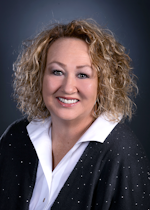Myth busters for dental assistants: Waterline contamination in dental offices
This article originally appeared in Dental Assisting Digest e-newsletter. Subscribe to this informative monthly ENL designed specifically for the dental assistant here.
“Waterlines are not a concern in dentistry. Our office uses distilled water and treats our water reservoirs with tablets, ensuring that our office water is clean and safe” . . . said no one ever!
Waterline contamination is a huge concern in dentistry due to the fact that the water supply tubing is the perfect environment for growing bacteria. It is wet and dark, and the small tubing makes it easy for bacteria to colonize and grow. Treating our water at the source is a good idea, but once the water enters into the units and runs through the tubing, no matter how clean it is going in, it never comes out clean.
The American Dental Association, Centers for Disease Control and Prevention, the Environmental Protection Agency, the American Water Works Association, and the American Public Health Association have all agreed that the safest drinking water is below 500 colony-forming units of bacteria per milliliter, or <500 CFU/ml. This means that the water we drink falls into this category and is safe for us to drink.
Since 2015 in the United States alone, there have been two serious cases of Legionella pneumophila bacteria found in dental unit water lines. The first case in Atlanta, Georgia, affected 30 children, and the second case in Anaheim, California, involved at least 70 children. Some of these children were hospitalized with minor ailments, while some had more serious effects such as lost baby teeth and adult teeth, and losing a portion of their jaw bone.
The Legionella bacteria, better known as Legionnaires disease, cannot be treated with antibiotics because they little effect on these strong bacteria. Instead, the portion of bone affected by the Legionella bacteria must be removed. This is why the disease is so devastating—it can be very deforming, if not deadly to a patient. In the US cases, all of the Legionella bacterium were traced back to the dental unit water lines at the clinics where the children had been treated.
Another documented case occurred in Rome, where an elderly women, who left her home only twice in two weeks and both times were to visit the dentist, died of Legionnaires disease in 2012. The bacterium was traced back to the waterline at her dental office.
Legionella is a micro-organism, a bacterium, and a potential water contaminant that should not be taken lightly. The elderly, young, and anyone with an immunosuppressed disease are most vulnerable to Legionnaires disease.
Now, about those waterlines
How do we treat the lines in order to prevent the buildup of bacteria in the lines?
Our waterlines have two sources of water. Your office is either directly connected to a municipal water supply or it uses a water reservoir to contain the water. The municipal water supply poses a problem because offices can’t control the water going into the lines and cannot “shock” the lines. This is a concern for dental offices. However, the dental units can be retro-fitted to hold a self-contained water reservoir, which allows staff to treat and shock the lines.
What should we do to protect patients?
1. Flush all water lines (air and water syringe, high-speed handpiece, Piezo and ultrasonics) for two full minutes at the beginning of each day.
2. Flush waterlines for a minimum of 30 seconds between patients.
3. Purge lines of all water at the end of the week so the water does not become stagnant.
4. Test your water! If you don’t know if the water is <500 CFU/ml, then you need to test it. The CDC recommends testing the water every three months.
5. Shock your lines. Shocking is done quarterly after you have run a test on the lines.
There are several very good shock treatments and tests available. Do your research, talk to your sales rep, and find one that works well for you. You must shock and test your lines. Testing will hopefully help your office develop a waterline protocol to ensure that the waterlines are being treated correctly.
Remember, we owe it to our patients to give them the best possible care by using the latest infection control measures.
RECENT MYTH BUSTERS
Cold sterile–glutaraldehyde
Know the laws for dental assisting in your state
Handpieces
For the most current dental assistant headlines, click here.
For the most current dental headlines, click here.
Reference
https://www.cda.org/news-events/requirements-for-maintaining-dental-water-lines








